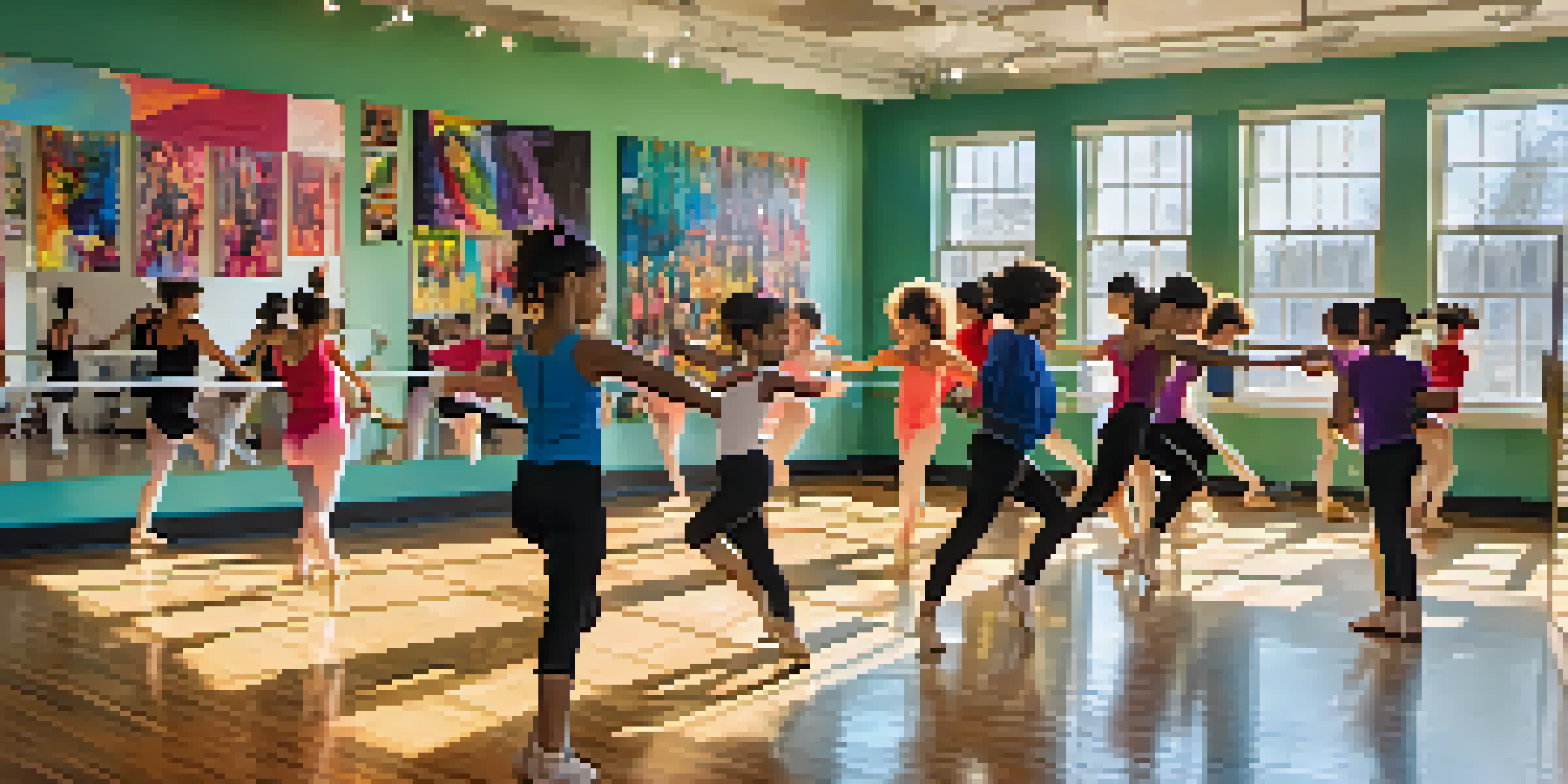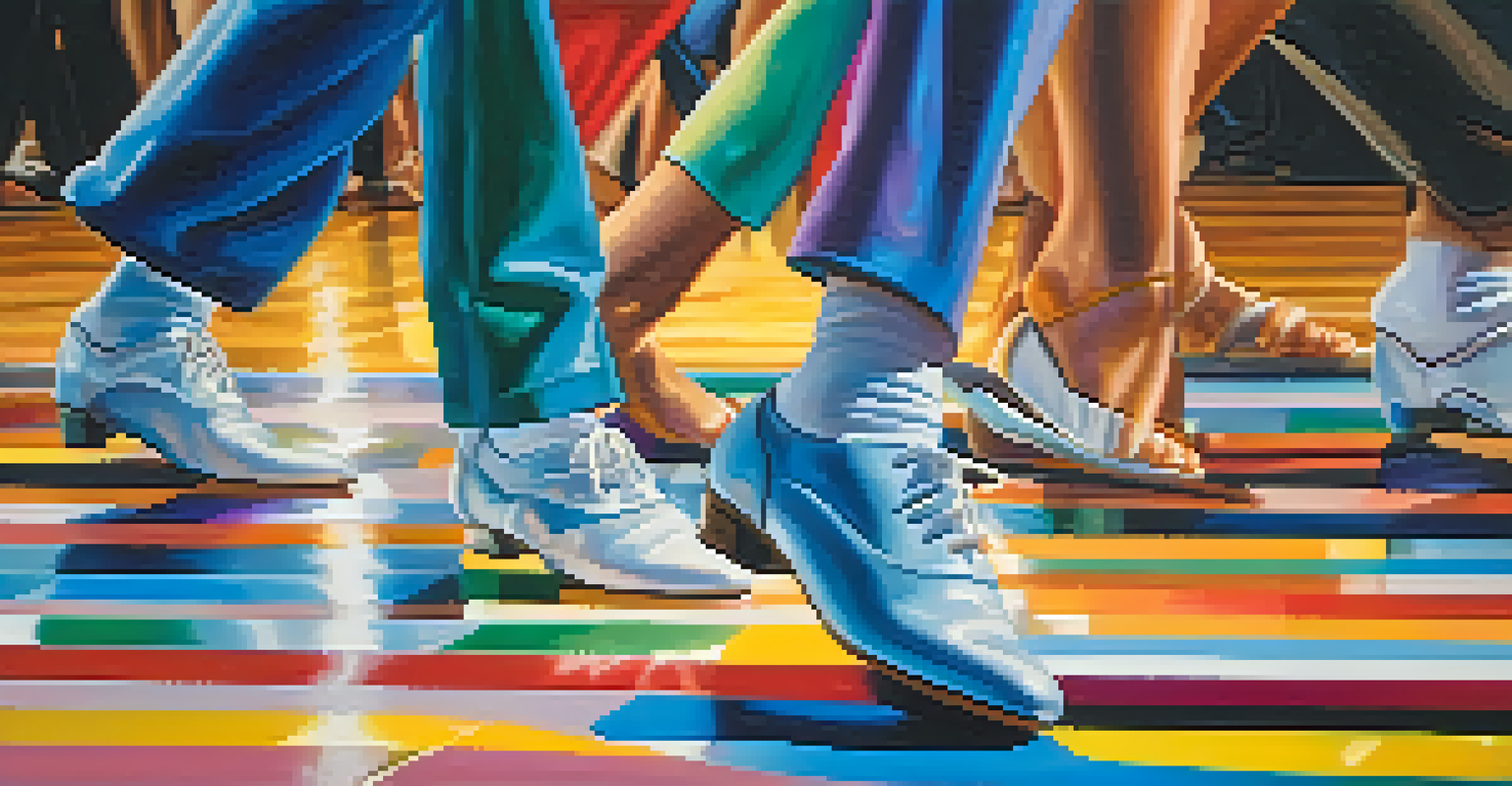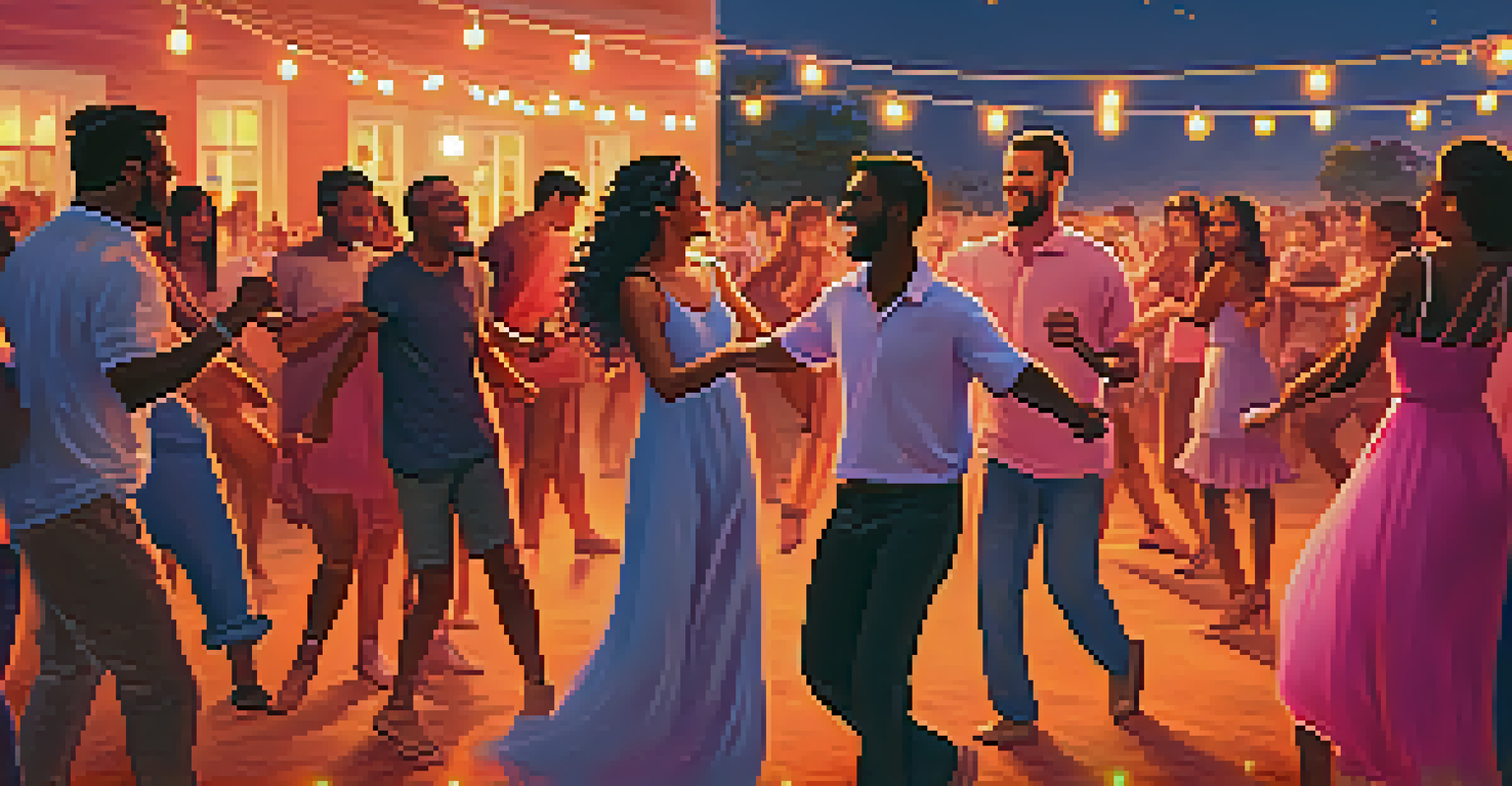Exploring the Connection Between Dance and Memory Retention

The Intriguing Link Between Movement and Memory
Dance and memory may seem unrelated at first glance, but they share a fascinating connection. When we engage in physical movement, especially rhythmic activities like dance, our brains become more active and engaged. This heightened activity can lead to improved memory retention, making it easier to recall information later on. Think of your brain as a muscle that strengthens with exercise; dancing is one of the many workouts it craves.
Dance is the hidden language of the soul.
Research has shown that the act of dancing can stimulate brain areas that are responsible for memory and learning. When we move our bodies, we create neural connections that help us remember not just dance steps, but other information as well. This is similar to how learning a new language can be facilitated through songs and chants, where rhythm and repetition play key roles in memory retention.
Additionally, the social aspect of dance can further enhance cognitive function. When dancing with others, we often share cues and instructions, which reinforces memory through collaboration. This interaction not only makes the learning process more enjoyable but also solidifies our memory of the movements, creating a multi-sensory experience that sticks.
How Dance Engages Multiple Senses to Boost Retention
One of the most captivating aspects of dance is its ability to engage multiple senses simultaneously. When we dance, we rely on our sense of sight, hearing, and touch, which helps create a rich tapestry of experiences. This multi-sensory engagement has been shown to improve information retention, as our brains are wired to remember experiences that involve various senses.

For instance, think about learning a new dance routine. You not only see the steps demonstrated but also hear the music and feel the rhythm in your body. This combination creates a stronger memory imprint than if you were simply reading instructions or watching a video. The more senses we involve in the learning process, the more likely we are to remember the information later.
Movement Boosts Memory Retention
Engaging in dance activates brain areas linked to memory, enhancing our ability to recall information.
Moreover, dance often incorporates storytelling, which can further enhance memory retention. When movements are tied to a narrative, they become more meaningful, making it easier for our brains to latch onto them. This is akin to how we remember the plot of a movie; the emotional connection to the story helps solidify our memory of the details.
The Role of Rhythm in Memory Formation
Rhythm plays a pivotal role in both dance and memory retention. When we dance, we synchronize our movements with the beat of the music, creating a pattern that our brains can easily recognize. This rhythmic patterning helps us encode information more effectively, as our brains thrive on structure and predictability in learning.
Rhythm is the soul of the universe; it is the heartbeat of life.
Imagine clapping your hands to a catchy tune; the rhythm not only makes it fun but also aids in memorization. Studies have shown that when information is presented in a rhythmic format, individuals are better at recalling it later. This is why many educational tools use songs or chants to teach concepts—rhythm acts as a mnemonic device.
Furthermore, engaging with rhythm can also boost our overall cognitive function. Activities that involve rhythm and timing, like dance, have been linked to improved attention and processing speed. So, the next time you're dancing, remember that you're not just having fun; you’re also boosting your brainpower!
Dance as a Tool for Enhancing Cognitive Skills
Beyond memory retention, dance serves as a powerful tool for enhancing various cognitive skills. Engaging in dance requires quick decision-making, spatial awareness, and coordination, which can translate into improved cognitive function in daily life. This mental agility is crucial in tasks requiring focus and concentration, making dance a valuable activity for people of all ages.
For children, dance can be particularly beneficial as it fosters cognitive development during crucial growth phases. Learning choreography not only teaches them rhythm but also enhances their ability to follow instructions and work collaboratively with others. This combination of skills lays a strong foundation for academic success.
Multi-Sensory Learning in Dance
Dance engages various senses, creating rich experiences that improve information retention.
Adults can also reap the cognitive benefits of dance. Studies have shown that seniors who engage in regular dancing exhibit better memory and cognitive function compared to those who do not. It’s never too late to start dancing; the brain loves new challenges at any age!
Emotional Well-being: Dance as a Memory Reinforcer
Dance is not only a physical activity but also an emotional outlet that can significantly impact memory retention. Engaging in dance often elicits feelings of joy, excitement, and connection, which can create a positive emotional environment for learning. When we associate positive emotions with a memory, our brains are more likely to recall that information later on.
Consider how certain songs can evoke powerful memories tied to specific events or periods in our lives. This emotional connection enhances the memory, making it easier to retrieve when needed. Similarly, when we dance, the joy and freedom of movement can create lasting impressions that enhance our ability to remember associated information.
Moreover, dance can serve as a stress reliever, allowing us to clear our minds and focus better. When we reduce stress, we create a more conducive environment for memory retention. So, whether you’re dancing at a party or taking a class, know that you’re not just having fun—you're also nurturing your mental well-being.
Case Studies: Dance and Memory in Action
Various studies have highlighted the positive effects of dance on memory retention. For example, a study conducted with older adults found that participants who engaged in dance classes showed significant improvements in their memory and cognitive function compared to those who participated in other forms of exercise. This suggests that dance, with its rhythmic and social components, offers unique benefits that traditional workouts might not provide.
Another interesting case involved school children learning a foreign language through dance. In this study, children who learned vocabulary through choreographed movements were able to recall words more effectively than those who learned through traditional methods. The combination of physical movement and rhythm made the learning experience more enjoyable and memorable.
Dance Enhances Cognitive Skills
Participating in dance fosters quick decision-making and coordination, translating to improved cognitive function.
These case studies underscore the idea that dance is a valuable tool for enhancing memory retention across various demographics. Whether you're young or old, incorporating dance into your routine can be a fun and effective way to boost your cognitive abilities.
Tips for Using Dance to Improve Memory Retention
If you're interested in harnessing the power of dance to boost your memory, here are some practical tips to get started. First, consider taking a dance class that focuses on styles you enjoy. Whether it's salsa, ballet, or hip-hop, the key is to engage with the movement and have fun while doing it. The more you enjoy the experience, the more effective it will be for your memory.
Additionally, try incorporating rhythm-based activities into your study sessions. For instance, create a song or chant using the information you want to remember. This playful approach can help solidify the material in your mind while also making the learning process enjoyable.

Lastly, don't underestimate the power of social dancing. Joining a dance group or attending social dance events can enhance your memory retention through social connections and shared experiences. Dancing with others not only reinforces the movements but also creates lasting bonds that make the learning experience even richer.